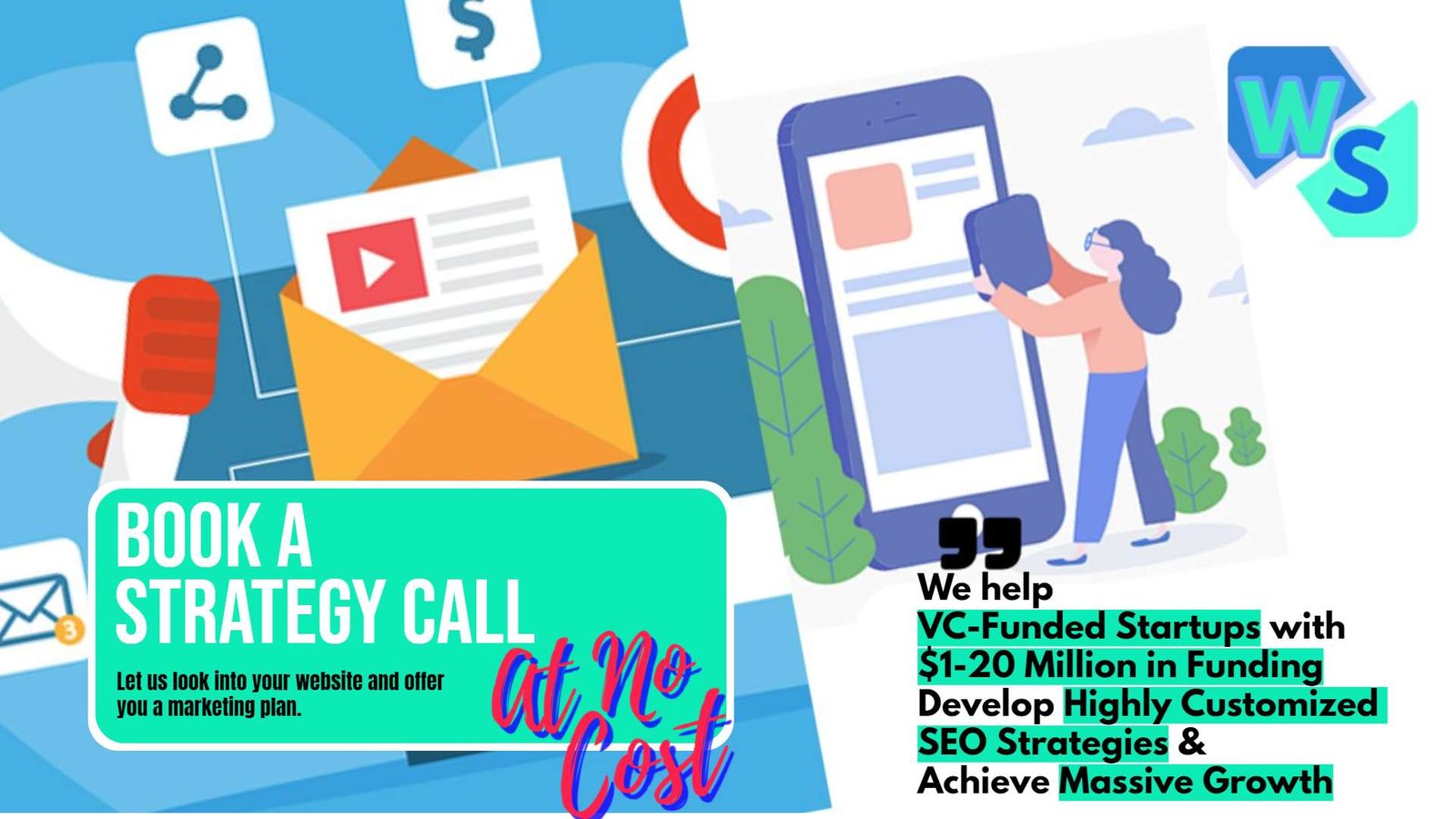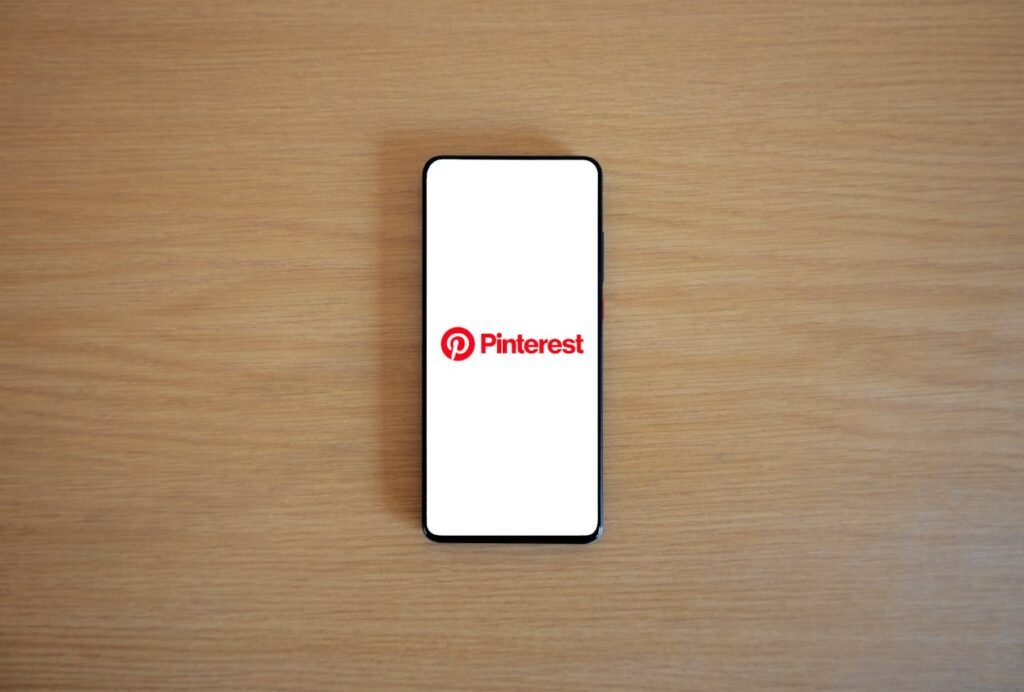Hosting a social media workshop can be a game-changer for businesses looking to enhance their online presence. Whether you’re aiming to educate your team, engage with clients, or build community connections, a well-organized workshop can provide valuable insights and practical skills. In this guide, we’ll explore how to host an effective social media workshop that leaves a lasting impact.
Planning Your Workshop
Define Your Objectives
Clarifying your objectives is the foundation of a successful workshop. Start by identifying the specific outcomes you want to achieve. These could range from enhancing participants’ basic social media skills to advanced strategies for growing a business online.
Break down these objectives into measurable goals. For instance, aim for participants to create a content calendar by the end of the session or to understand how to analyze social media metrics effectively. Having clear, measurable objectives ensures that your workshop is focused and outcome-driven.
Identify Your Audience
Understanding your audience’s background and needs is crucial. Conduct a pre-workshop survey to gather information about their current social media skills, the platforms they use, and the challenges they face. This data will help you tailor your content to their specific needs, making your workshop more relevant and impactful.
Additionally, segment your audience if necessary. If you have participants with varying levels of expertise, consider offering breakout sessions that cater to beginners and advanced users separately. This ensures that everyone receives the appropriate level of instruction and engagement.
Choose the Right Format
Selecting the right format involves more than just deciding between in-person and virtual. Consider hybrid models where you can offer both live and recorded sessions. This flexibility allows participants to choose what works best for them and ensures that those who cannot attend live can still benefit from the content.
Additionally, think about incorporating various teaching methods such as lectures, interactive activities, and peer learning opportunities. This mixed approach caters to different learning styles and keeps the workshop dynamic and engaging.
Develop a Comprehensive Agenda
A well-structured agenda is vital for keeping your workshop organized and on track. Start with a compelling introduction that outlines the workshop’s objectives and what participants can expect. Break your content into manageable segments, each focused on a specific topic.
Include interactive elements such as group discussions, practical exercises, and real-time feedback sessions to keep participants engaged. Plan for regular breaks to avoid fatigue and ensure you leave ample time for Q&A sessions at the end of each segment. Sharing the agenda with participants in advance helps them prepare and sets clear expectations.
Design Engaging Presentations

Your presentations should be visually appealing and content-rich. Use high-quality visuals, including infographics, videos, and real-life examples, to illustrate your points. Keep your slides concise, focusing on key takeaways rather than dense text.
Engage your audience by asking questions, inviting them to share their experiences, and incorporating live polls or quizzes. This interactive approach not only makes your presentations more engaging but also reinforces learning through active participation.
Prepare Comprehensive Workshop Materials
Comprehensive materials enhance the learning experience and provide valuable resources for participants to refer to later. Create a detailed workbook or digital guide that includes summaries of key points, step-by-step instructions for practical activities, and additional resources such as articles, templates, and tools.
Make these materials accessible before, during, and after the workshop. For virtual workshops, ensure that digital copies are easy to download and navigate. Well-prepared materials contribute to a more structured and effective learning experience.
Plan for Effective Follow-Up
An effective workshop doesn’t end when the session concludes. Plan a robust follow-up strategy to reinforce learning and keep participants engaged. Send a post-workshop email that includes a summary of the key takeaways, answers to any questions that were raised, and links to additional resources.
Include a survey to gather feedback on what participants found useful and what could be improved. Offer follow-up webinars or one-on-one consultations to address any lingering questions and provide additional support. This continued engagement helps solidify the knowledge gained during the workshop and builds a lasting relationship with your participants.
Developing the Content
Create a Detailed Agenda
A well-thought-out agenda is crucial for keeping your workshop organized and on track. Begin by defining the main topics you want to cover and allocate time slots for each segment. Start with a brief introduction that outlines the workshop’s objectives and sets expectations.
Divide the content into logical sections, such as an overview of social media platforms, content creation strategies, audience engagement techniques, and analytics. Each section should build on the previous one, creating a cohesive learning journey. Include interactive elements like live demonstrations, Q&A sessions, and group activities to break up the content and maintain engagement.
Design Engaging Presentations
Your presentations should be visually appealing and easy to follow. Use a consistent theme and color scheme to create a professional look. Incorporate high-quality images, infographics, and videos to illustrate key points. Keep text to a minimum on your slides, focusing on bullet points and short phrases that highlight the main ideas.
Narrate the details verbally, using the slides as visual aids. Incorporate storytelling techniques to make your presentations more engaging. Share real-life examples and case studies that participants can relate to, and use humor and personal anecdotes to keep the tone conversational and enjoyable.
Incorporate Hands-On Activities
Hands-on activities are essential for reinforcing learning and making the workshop more interactive. Design activities that allow participants to apply what they’ve learned in practical scenarios. For instance, you can have participants create a sample social media post, develop a content calendar, or conduct a mini social media audit of a peer’s account.
Provide clear instructions and examples to guide them through the activities. Walk around the room or monitor virtual breakout rooms to offer assistance and feedback. These activities help participants build confidence in their new skills and provide immediate, actionable takeaways.
Develop Comprehensive Workshop Materials
Comprehensive materials are a valuable resource for participants both during and after the workshop. Create a detailed workbook or digital guide that complements your presentations. Include summaries of key points, step-by-step instructions for activities, templates, and additional reading materials.
Ensure that these materials are well-organized and easy to navigate. For virtual workshops, provide downloadable PDFs or access to an online resource hub. Encourage participants to take notes and highlight sections that are particularly relevant to their needs. Well-prepared materials enhance the learning experience and serve as useful references for future use.
Use Real-Life Examples and Case Studies
Real-life examples and case studies make your content more relatable and impactful. Select case studies that align with your participants’ industries and interests. Present these examples in a narrative format, explaining the challenges faced, the strategies implemented, and the outcomes achieved. Discuss both successful campaigns and lessons learned from failures to provide a balanced perspective.
Encourage participants to share their own experiences and insights, fostering a collaborative learning environment. Analyzing real-life examples helps participants understand the practical application of theoretical concepts and inspires them to implement similar strategies in their own social media efforts.
Engage with Interactive Elements
Incorporate interactive elements throughout your workshop to keep participants engaged. Use live polls to gather opinions on various topics and display the results in real-time. Conduct quizzes at the end of each section to reinforce learning and add a fun, competitive element.
Use breakout rooms for small group discussions and activities, allowing participants to collaborate and share ideas. Encourage questions and feedback through chat functions or dedicated Q&A sessions. Interactive elements not only enhance engagement but also provide valuable insights into participants’ understanding and areas where they might need additional support.
Ensure Content is Actionable
Your content should be highly actionable, providing participants with clear steps they can take to improve their social media strategies. Focus on practical tips and techniques that can be easily implemented. For example, when discussing content creation, provide a checklist of best practices for writing engaging posts or a template for planning a content calendar.
When covering analytics, show participants how to set up and interpret key metrics. Use real-life scenarios and role-playing exercises to demonstrate how these strategies can be applied in different contexts. Actionable content ensures that participants leave the workshop with tangible skills and strategies they can immediately put into practice.
Promoting Your Workshop
Utilize Social Media Channels
Effective promotion on social media is crucial for attracting participants to your workshop. Create engaging content that highlights the value and benefits of attending your workshop. Use eye-catching graphics, short teaser videos, and testimonials from past participants to build interest.
Schedule regular posts across all your social media platforms, including Facebook, Instagram, LinkedIn, and Twitter, to ensure maximum visibility. Use platform-specific features like Instagram Stories, LinkedIn articles, and Facebook events to reach different segments of your audience. Engage with your followers by responding to comments and messages promptly to build excitement and anticipation.
Leverage Email Marketing
Email marketing remains one of the most effective ways to promote your workshop. Build a targeted email list of potential attendees, including past participants, current clients, and industry contacts. Craft compelling email campaigns that emphasize the unique benefits of your workshop, such as expert insights, hands-on activities, and networking opportunities.
Include clear calls-to-action, encouraging recipients to register early. Use personalization techniques to address recipients by name and tailor the content to their specific interests. Send reminder emails as the event date approaches, offering special incentives like early bird discounts or exclusive access to additional resources.
Partner with Influencers and Industry Experts
Collaborating with influencers and industry experts can significantly boost your workshop’s visibility. Identify influencers and thought leaders in your industry who have a strong following and credibility. Reach out to them with a proposal to promote your workshop in exchange for free access, a guest speaking spot, or other incentives.
Encourage them to share information about your workshop with their audience through social media posts, blog articles, or email newsletters. Their endorsement can lend credibility and attract a larger audience. Highlight these partnerships in your promotional materials to build trust and interest.
Create a Dedicated Landing Page
A dedicated landing page on your website is essential for effective promotion. This page should provide all the necessary information about your workshop, including the agenda, key topics, speakers, and registration details. Use persuasive copy that clearly communicates the value of attending.
Include high-quality visuals, such as photos and videos from past workshops, to make the page more engaging. Optimize the landing page for SEO by incorporating relevant keywords, meta descriptions, and alt tags. Ensure the registration process is straightforward and user-friendly, with clear calls-to-action and minimal steps.
Engage in Community Outreach
Community outreach is a powerful way to promote your workshop, especially if you’re targeting a local audience. Reach out to local business associations, networking groups, and industry organizations to spread the word. Offer to speak at their events or provide promotional materials for their members.
Collaborate with local media outlets, such as newspapers, radio stations, and online publications, to feature your workshop in their event listings or articles. Engaging with the community helps build local support and increases your workshop’s visibility.
Use Paid Advertising Strategically
Paid advertising can help you reach a wider audience and drive registrations. Use targeted ads on social media platforms like Facebook, Instagram, and LinkedIn to reach specific demographics and interests. Create compelling ad copy and visuals that highlight the benefits of your workshop and include a strong call-to-action.
Set up retargeting campaigns to reach users who have visited your website or engaged with your content but haven’t registered yet. Monitor the performance of your ads closely and adjust your strategy based on the results to maximize your return on investment.
Host Pre-Workshop Webinars or Live Sessions
Hosting pre-workshop webinars or live sessions can generate interest and provide a preview of what attendees can expect. Choose a relevant topic that addresses common challenges or trends in social media marketing.
Promote the webinar through your social media channels, email list, and website. During the session, highlight the key benefits of attending your workshop and answer any questions from participants. This not only builds excitement but also provides value upfront, increasing the likelihood of registrations.
Encourage Word-of-Mouth Referrals
Word-of-mouth referrals are a powerful promotional tool. Encourage past participants to spread the word about your workshop by offering referral incentives, such as discounts or free access to additional resources.
Create shareable content that participants can easily share with their networks, including social media posts, email templates, and printable flyers. Highlight testimonials and success stories from past participants in your promotional materials to build trust and credibility.

Managing Logistics
Select the Perfect Venue
Choosing the right venue is critical to the success of your workshop. For in-person events, select a location that is easily accessible to your target audience. Consider factors such as parking availability, public transportation links, and proximity to local amenities like restaurants and hotels.
The venue should also have the necessary facilities, such as high-speed Wi-Fi, audiovisual equipment, and comfortable seating. Ensure the space is conducive to learning, with good lighting, ventilation, and minimal noise distractions. If possible, visit the venue beforehand to check the setup and make any necessary arrangements.
Set Up Virtual Platforms
For virtual workshops, selecting the right platform is just as important. Choose a reliable platform that supports all the features you need, such as screen sharing, breakout rooms, and interactive tools like polls and Q&A sessions. Platforms like Zoom, Microsoft Teams, and Google Meet are popular choices.
Test the platform thoroughly before the workshop to ensure everything runs smoothly. Provide participants with clear instructions on how to join the workshop, including any software they need to download and login details. Consider having a backup platform ready in case of technical issues.
Prepare Workshop Materials
Having well-prepared materials is essential for a seamless workshop experience. Create a comprehensive workbook that includes all the key points, exercises, and additional resources. For virtual workshops, ensure these materials are available in digital formats and easy to download.
For in-person events, prepare printed copies and consider providing branded folders or notebooks for participants to take notes. Additionally, prepare any presentation slides, videos, or other multimedia elements in advance. Organize all materials logically and ensure they are easily accessible during the workshop.
Plan for Technical Support
Technical issues can disrupt the flow of your workshop, so it’s crucial to have a robust plan in place. For virtual workshops, designate a team member to handle technical support, assisting participants with login issues, audio problems, or any other technical difficulties.
For in-person workshops, ensure there is on-site technical support to manage the audiovisual equipment and troubleshoot any issues. Provide participants with contact information for technical support and have a list of common troubleshooting steps ready. Having a dedicated technical support plan ensures that any issues can be quickly resolved, minimizing disruptions.
Organize Refreshments and Breaks
If you’re hosting an in-person workshop, organizing refreshments and breaks is important for keeping participants energized and focused. Plan regular breaks and provide refreshments such as coffee, tea, water, and snacks. Consider dietary restrictions and offer a variety of options.
For longer workshops, arrange for lunch to be provided or offer recommendations for nearby dining options. Communicate the schedule clearly so participants know when to expect breaks. For virtual workshops, encourage participants to take regular breaks to stretch and rest their eyes, and provide a clear schedule with designated break times.
Coordinate with Speakers and Facilitators
If your workshop includes guest speakers or facilitators, coordinate closely with them to ensure everything runs smoothly. Provide them with a detailed agenda and clarify their roles and responsibilities. Conduct a briefing session before the workshop to discuss key points and ensure alignment.
For virtual workshops, conduct a technical run-through to familiarize speakers with the platform and address any technical concerns. Ensure that all speakers and facilitators have access to the necessary materials and resources to deliver their sessions effectively.
Monitor Attendance and Engagement
Keeping track of attendance and engagement is essential for assessing the success of your workshop. For in-person workshops, have a registration desk where participants can check in and collect their materials. For virtual workshops, use the platform’s attendance tracking features to monitor who joins the session and for how long they stay engaged.
Encourage interaction by using features like polls, quizzes, and breakout rooms. Monitor the chat and Q&A sections to ensure all questions are addressed and participants are actively engaged. Gathering this data helps you understand the effectiveness of your workshop and identify areas for improvement.
Ensure Safety and Accessibility
Ensuring the safety and accessibility of your workshop is crucial for creating an inclusive environment. For in-person workshops, check that the venue complies with safety regulations and has necessary accessibility features such as ramps, elevators, and accessible restrooms. For virtual workshops, ensure the platform is accessible to all participants, including those with disabilities.
Provide captions or transcripts for videos, and use accessible presentation formats. Clearly communicate safety protocols and accessibility options to participants in advance. Ensuring safety and accessibility demonstrates your commitment to inclusivity and enhances the overall experience for all attendees.
Engaging Participants During the Workshop
Start with Icebreakers
Icebreakers are a great way to set a relaxed and friendly tone at the beginning of your workshop. Choose icebreaker activities that are relevant to social media and encourage interaction.
For example, ask participants to share their favorite social media platform and why they prefer it, or have them describe a successful social media campaign they’ve run or admired. This not only helps break the ice but also provides insights into participants’ experiences and expectations.
Foster Interactive Learning
Interactive learning keeps participants engaged and enhances retention. Incorporate live polls, quizzes, and interactive exercises throughout the workshop. Use tools like Mentimeter or Kahoot! to create real-time polls and quizzes that participants can answer using their smartphones.
For example, during a session on social media analytics, you can present a set of metrics and ask participants to interpret the data and suggest improvements. This encourages active participation and helps solidify the concepts being taught.
Use Real-Time Feedback
Real-time feedback is essential for maintaining engagement and ensuring that participants are following along. Encourage participants to ask questions and provide feedback during the workshop. Use features like chat boxes in virtual settings or Q&A sessions in-person to facilitate this.
Address questions promptly and adjust your pace or content if necessary based on the feedback. This responsive approach shows that you value participants’ input and are committed to their learning.
Incorporate Group Activities
Group activities foster collaboration and allow participants to learn from each other. Design activities where participants can work in small groups to discuss topics, solve problems, or create content.
For instance, you could have groups create a mini social media campaign for a hypothetical product and present their strategy to the rest of the workshop. This not only reinforces learning but also helps build a sense of community among participants.
Encourage Sharing of Best Practices
Leverage the collective knowledge and experience of your participants by encouraging them to share their best practices and success stories. Create opportunities for participants to discuss and showcase their successful social media strategies.
For example, during a session on content creation, ask participants to share their highest-performing posts and explain what made them successful. This peer-to-peer learning approach can provide valuable insights and inspire others.
Utilize Gamification
Gamification can make learning more engaging and fun. Introduce game-like elements such as points, badges, or leaderboards to motivate participants. For example, you can award points for correct answers during quizzes or for active participation in discussions.
Recognize top performers with virtual badges or small prizes. Gamification creates a sense of achievement and friendly competition, keeping participants motivated and engaged.
Facilitate Real-World Application

Ensure that participants can apply what they learn in real-world scenarios. Design practical exercises that mimic real-life challenges they might face in their social media marketing efforts.
For example, during a session on crisis management, present a mock social media crisis and have participants develop and present their response strategies. This hands-on approach helps participants gain confidence in their skills and prepares them for actual situations.
Conduct Live Demos
Live demonstrations can be highly effective in illustrating key concepts and techniques. Show participants how to use specific social media tools or platforms in real-time. For instance, conduct a live demo on how to set up a Facebook ad campaign, analyze Instagram insights, or use a social media management tool like Hootsuite.
Allow participants to follow along on their own devices and ask questions as you go. Live demos provide practical, visual learning and help demystify complex processes.
Create an Inclusive Environment
An inclusive environment encourages participation from all attendees. Make sure that everyone feels comfortable sharing their thoughts and ideas. Set ground rules for respectful communication and actively encourage contributions from quieter participants.
Use inclusive language and examples that resonate with diverse audiences. An inclusive environment fosters a richer learning experience and ensures that all participants feel valued.
Conclusion
Hosting an effective social media workshop requires careful planning, engaging content, and strategic execution. By defining clear objectives, understanding your audience, and selecting the right format, you set the foundation for a successful event. Developing comprehensive and interactive content ensures that participants remain engaged and can apply what they learn in practical scenarios. Effective promotion through various channels maximizes attendance and visibility.
Managing logistics meticulously, from choosing the perfect venue to ensuring technical support, contributes to a seamless experience. Engaging participants through interactive activities, real-time feedback, and inclusive practices fosters a dynamic learning environment. By incorporating these strategies, you can deliver a workshop that not only educates but also inspires and empowers your participants.
Read Next:
- Marketing Ideas to Attract Visitors to Your Campground
- Festive Christmas Marketing Strategies to Increase Sales
- Autumn Marketing Strategies to Spice Up Your Campaigns
- Effective Referral Marketing Strategies to Grow Your Business
- Marketing Strategies to Grow Your Law Firm






















Comments are closed.